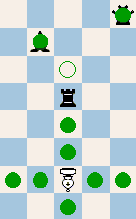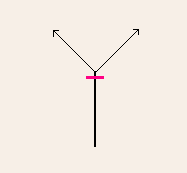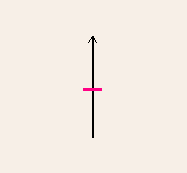

The Crossbishop is a bifurcation piece. It slides like a rook. But to capture it must jump over any piece to the next square and then continue diagonally in the prolonged movement direction (two possible directions). The square immediately behind the jumped piece must be empty ("weak" Crossbishop). The Crossbishop's value is 3, that is, the same as a bishop or knight. Otherwise the rules are the same as in standard chess, except for the possible promotion to Crossbishop.
Although the Crossbishop loses 'screens' for jumping when the pieces become fewer, it becomes more mobile when the orthogonals are cleared from pieces. Thus it often retains its value in the endgame. Note that the Crossbishop can have a big influence from behind the friendly pawn chain, especially if it can slide along the first rank.
The 68-squared Gustavian board makes it possible to place additional pieces on the board without substantially increasing the board size. This often means that a strategical and tactical tension is maintained. It also brings the advantage that bishops and knights remain equal in value. Crossbishop Chess, and the new Crossbishop piece, were invented by undersigned, August 2006. There is also a variant where Scorpions take the place of the pawns.
 The Crossbishop slides like a rook, but captures by a jump followed by a bishop's slide.
The Crossbishop slides like a rook, but captures by a jump followed by a bishop's slide.
 The Crossbishop's capture principle. The screen occurs anywhere on the first leg. Compare with the Chinese cannon's capture principle below.
The Crossbishop's capture principle. The screen occurs anywhere on the first leg. Compare with the Chinese cannon's capture principle below.
 Chinese cannon: the screen occurs anywhere on the one leg. (Movement occurs in four directions.)
Chinese cannon: the screen occurs anywhere on the one leg. (Movement occurs in four directions.)
• You can download my free Crossbishop Chess program here (updated 2007-10-30), but you must own the software Zillions of Games to be able to run it.
• Don't miss my other chess variants.
© M. Winther (August 2006).